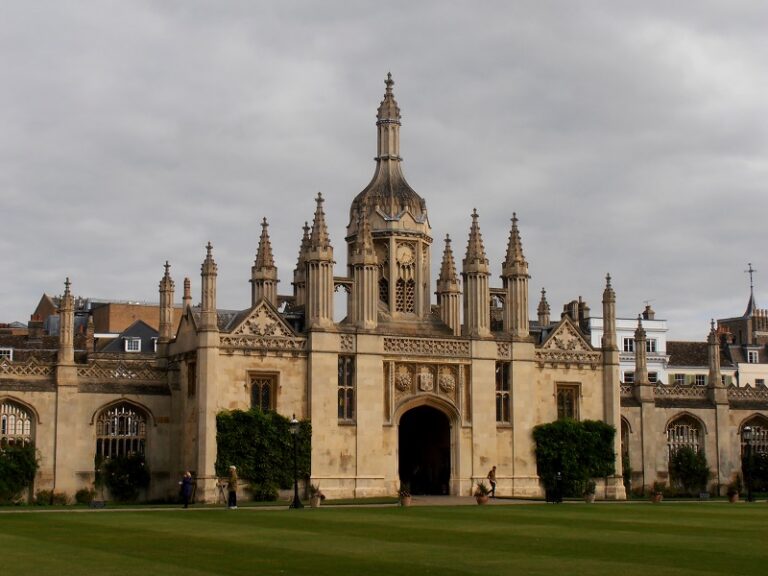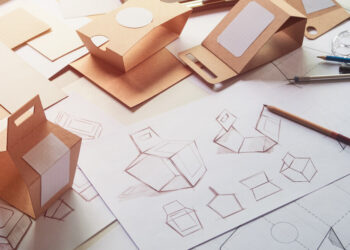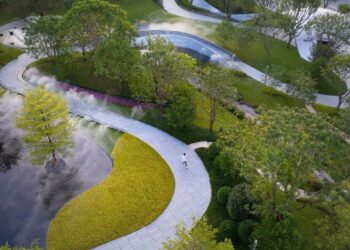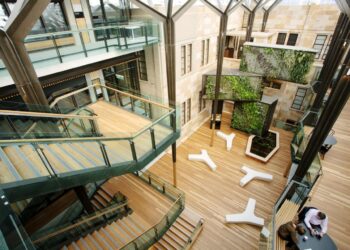Iconic building styles stand as enduring testaments to human ingenuity, artistic vision, and technological prowess, shaping our skylines and reflecting the cultural fabric of their eras. Far from being mere structures, these architectural movements embody a profound interplay of form, function, and philosophy, continually pushing the boundaries of construction and aesthetic expression. This comprehensive article delves into the most significant and influential architectural styles throughout history, exploring their origins, defining characteristics, and lasting impact on the built environment. Understanding these iconic styles isn’t solely about appreciating their beauty; it’s about discerning the critical elements that have made them timeless, appealing to a broad audience, and ultimately. From the majestic pyramids of ancient Egypt to the soaring glass towers of modernism, the legacy of iconic building styles continues to inspire and inform contemporary design.
Throughout history, architecture has served not just as shelter but as a powerful form of communication, reflecting the beliefs, innovations, and social structures of the civilizations that created it. Early vernacular structures evolved into monumental temples, castles, and civic buildings, each bearing the distinctive mark of its time and place. The progression of architectural styles is a fascinating narrative of human evolution, marked by breakthroughs in materials, construction techniques, and artistic sensibilities. In every era, certain buildings and the styles they represent have transcended their immediate purpose to become cultural landmarks, symbols of an age, or pinnacles of design achievement. This continuous pursuit of both beauty and structural integrity, often driven by a quest for divine connection, imperial power, or civic pride, has shaped the fascinating array of iconic building styles that define our global heritage today.
Ancient Civilizations
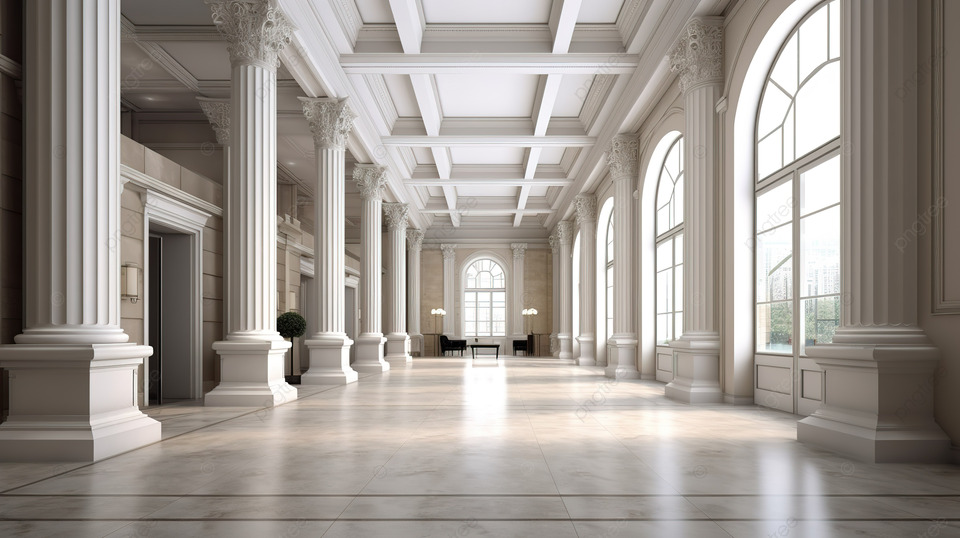
The earliest iconic building styles emerged from ancient civilizations, driven by religious devotion, imperial power, and the need for monumental expressions of authority and belief.
A. Ancient Egyptian Architecture (c. 3000 BCE – 30 BCE):
* Purpose and Symbolism: Primarily focused on temples and tombs (pyramids, mastabas), designed for eternity and reflecting beliefs in the afterlife, divine pharaohs, and cosmic order. Massive scale symbolized power and permanence.
* Key Characteristics:
* Massive Scale & Monumentality: Imposing structures built with colossal stones, designed to awe and inspire reverence.
* Post-and-Lintel Construction: Basic structural system using strong vertical supports (posts/columns) and horizontal beams (lintels).
* Hieroglyphs & Relief Carvings: Walls extensively decorated with pictorial representations of deities, pharaohs, and daily life, serving as both art and historical record.
* Limited Openings: Interiors often dark and mysterious, emphasizing the sacredness of the space.
* Symbolic Motifs: Use of lotus, papyrus, and palm motifs in columns and capitals, representing fertility and the Nile.
* Iconic Examples: The Pyramids of Giza, Karnak Temple Complex, Temple of Luxor.
B. Classical Architecture (Ancient Greek & Roman, c. 800 BCE – 600 CE):
* Purpose and Philosophy: Greek architecture focused on temples, embodying ideals of democracy, reason, and perfect proportions (e.g., Parthenon as a symbol of Athenian democracy). Roman architecture was more pragmatic, building for empire, civic life, and public utility (e.g., aqueducts, basilicas, coliseums).
* Key Characteristics (Greek):
* Orders of Architecture: Highly formalized systems of columns and entablature (Doric, Ionic, Corinthian), defining proportions and aesthetics.
* Symmetry & Balance: Emphasis on mathematical precision and harmonious relationships between parts.
* Pediments & Friezes: Triangular gable ends and sculpted bands often depicting mythological scenes.
* Refinement & Elegance: Use of marble, refined details, and optical corrections to achieve perceived perfection.
* Key Characteristics (Roman):
* Innovation in Materials: Extensive use of concrete, enabling larger and more complex structures.
* Arches, Vaults, & Domes: Mastery of these forms allowed for vast interior spaces without numerous internal supports (e.g., Pantheon’s dome).
* Circularity & Grand Scale: Amphitheaters (Coliseum) and grand baths for public use.
* Engineering Prowess: Aqueducts and roads demonstrating advanced infrastructure.
* Iconic Examples: Parthenon (Greek), Colosseum, Pantheon, Roman Aqueducts (Roman).
Medieval Periods
The Middle Ages saw architectural styles deeply intertwined with religious fervor, feudal power structures, and defensive needs.
A. Romanesque Architecture (c. 1000 – 1200 CE):
* Purpose: Primarily monastic churches and castles, reflecting the power of the church and feudal lords in a period of relative instability.
* Key Characteristics:
* Thick Walls: Massive, load-bearing walls for structural stability and defense.
* Rounded Arches: Heavy, semicircular arches used for doors, windows, and vaulting.
* Barrel Vaults & Groin Vaults: Basic vaulting systems creating heavy, tunnel-like interiors.
* Small, Few Windows: Limited light due to structural necessity, creating somber, introspective interiors.
* Simple, Robust Forms: Solid, fortress-like appearance, often with prominent towers.
* Iconic Examples: Speyer Cathedral (Germany), Pisa Cathedral (Italy), Durham Cathedral (England).
B. Gothic Architecture (c. 1150 – 1500 CE):
* Purpose: Grand cathedrals and churches designed to inspire awe, connect with the divine, and demonstrate the glory of God and the wealth of cities.
* Key Characteristics:
* Pointed Arches: Distributes weight more efficiently than round arches, allowing for greater height and thinner walls.
* Ribbed Vaults: Intersecting arched ribs that support the roof, channeling weight to specific points.
* Flying Buttresses: External arched supports that transfer the lateral thrust of the vaults outward, allowing for thin walls and vast windows.
* Stained Glass Windows: Large, luminous windows depicting biblical stories, filling interiors with colored light.
* Verticality & Light: Emphasis on soaring heights, ethereal light, and intricate decorative elements (e.g., gargoyles, pinnacles).
* Iconic Examples: Notre Dame de Paris, Chartres Cathedral, Westminster Abbey, Cologne Cathedral.
Renaissance to Industrial Age
These periods marked a return to classical ideals, followed by rapid industrialization and new material possibilities.
A. Renaissance Architecture (c. 1400 – 1600 CE):
* Purpose: Churches, palaces, and civic buildings, reflecting a renewed interest in classical antiquity, humanism, and scientific inquiry.
* Key Characteristics:
* Symmetry & Proportion: Revival of classical orders, harmonious proportions, and balanced compositions.
* Dome Mastery: Reinterpretation of the Roman dome (e.g., Brunelleschi’s Florence Cathedral dome).
* Classical Motifs: Use of pediments, columns, pilasters, and cornices in a more rational and orderly manner.
* Emphasis on Human Scale: Buildings designed to relate to human experience and perspective.
* Centralized Plans: Churches often designed with a central plan, symbolizing divine perfection.
* Iconic Examples: Florence Cathedral (Brunelleschi), St. Peter’s Basilica (Bramante, Michelangelo, Bernini), Palazzo Pitti (Florence).
B. Baroque Architecture (c. 1600 – 1750 CE):
* Purpose: Grand churches, palaces, and urban designs reflecting the power and grandeur of the Catholic Church (Counter-Reformation) and absolute monarchies.
* Key Characteristics:
* Drama & Emotion: Emphasis on movement, theatricality, grandeur, and emotional intensity.
* Curved Forms & Undulating Walls: Rejecting straight lines for dynamic, curvilinear shapes.
* Rich Ornamentation: Abundant use of sculpture, painting, gilding, and luxurious materials.
* Illusion & Trompe l’oeil: Creating false perspectives and optical illusions to expand perceived space.
* Dynamic Juxtapositions: Contrasting light and shadow to create dramatic effects.
* Iconic Examples: St. Peter’s Square (Bernini), Palace of Versailles (France), Schönbrunn Palace (Vienna).
C. Neoclassical Architecture (c. 1750 – 1850 CE):
* Purpose: Public buildings (banks, government buildings), educational institutions, and grand residences, reflecting ideals of democracy, reason, and classical virtue, often following archaeological discoveries.
* Key Characteristics:
* Strict Adherence to Classical Forms: Return to stricter, more austere classical Roman and Greek forms than the Baroque.
* Symmetry & Monumentality: Grand scale, often with porticos, columns, and domes.
* Rationality & Order: Emphasis on clarity, logic, and intellectual rigor.
* Minimal Ornamentation: Less ornate than Baroque, focusing on clean lines and classical proportions.
* Iconic Examples: US Capitol Building, British Museum, Brandenburg Gate.
D. Art Nouveau (c. 1890 – 1910):
* Purpose: Bridging the gap between the artistic and applied arts, appearing in houses, commercial buildings, and decorative arts, as a reaction against academic art and historicism.
* Key Characteristics:
* Organic, Flowing Lines: Inspired by natural forms – plants, flowers, insects – with sinuous, asymmetrical curves.
* Wholeness of Design: Integration of architecture, interior design, furniture, and decorative arts into a unified aesthetic.
* New Materials & Techniques: Use of iron, glass, and ceramics to create delicate, expressive forms.
* Vibrant Ornamentation: Rich, often symbolic, ornamentation integrated into the structure rather than applied.
* Iconic Examples: Casa Batlló (Gaudi), Hôtel Tassel (Horta), Paris Métro Entrances (Guimard).
Modernism and Beyond
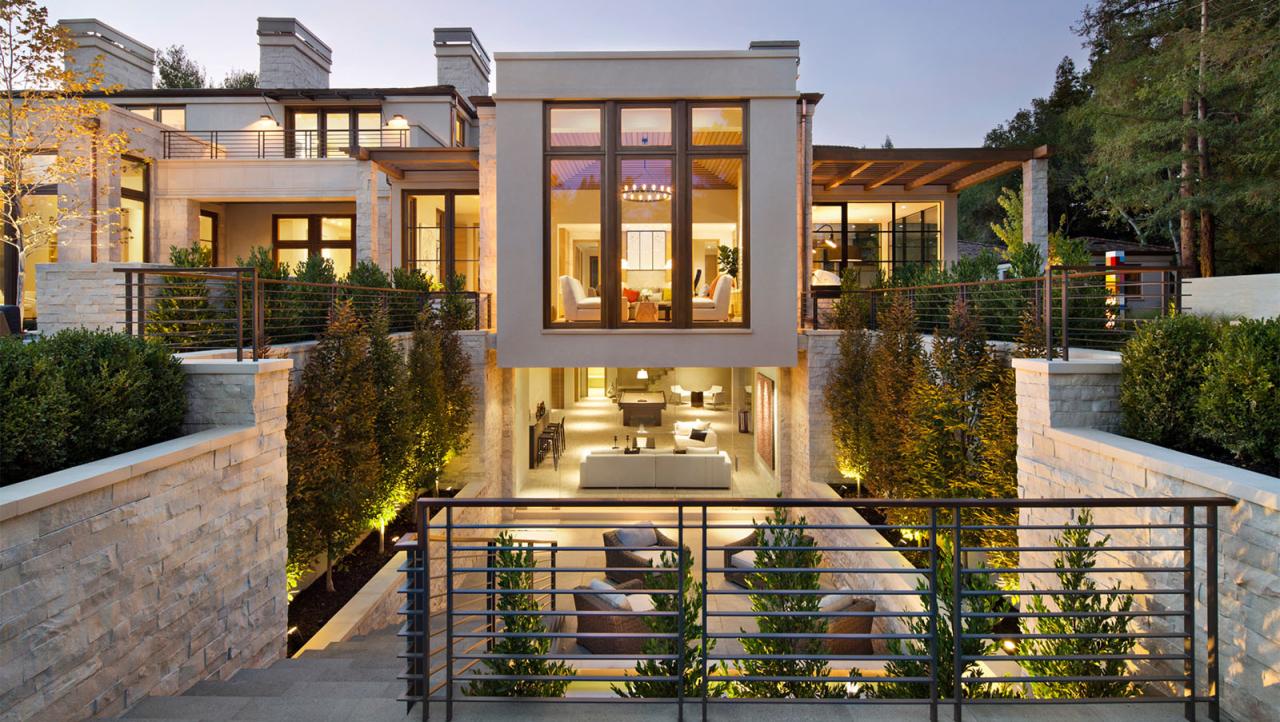
The 20th century witnessed radical departures from historical styles, driven by new materials, industrial processes, and changing philosophies about space and society.
A. Bauhaus and International Style (c. 1919 – 1970s):
* Purpose: To create a new architecture suitable for the industrial age, prioritizing functionality, rationality, and universal applicability, often for mass housing, schools, and offices.
* Key Characteristics:
* “Form Follows Function”: Design dictated by practical use and efficiency.
* Minimal Ornamentation: Rejection of applied decoration, focusing on pure, geometric forms.
* Flat Roofs & Smooth Surfaces: Often with white stucco or glass facades.
* Pilotis (columns): Lifting the building off the ground, creating open space beneath.
* Large Glass Areas: Emphasis on transparency and natural light.
* Standardized Production: Design for mass production and industrial materials (steel, reinforced concrete, glass).
* Iconic Examples: Bauhaus Building (Dessau, Gropius), Villa Savoye (Le Corbusier), Seagram Building (Mies van der Rohe), Farnsworth House (Mies van der Rohe).
B. Art Deco (c. 1920s – 1940s):
* Purpose: Representing modernity, glamour, luxury, and technological progress, popular in commercial buildings, hotels, and apartments during the Roaring Twenties and Great Depression.
* Key Characteristics:
* Geometric Forms & Symmetrical Layouts: Cubist, zigzag, and stepped patterns.
* Rich Ornamentation: Use of exotic materials (ebony, ivory, chrome, Bakelite), polished surfaces, and stylized motifs (sunbursts, chevrons, ziggurats).
* Bold Colors: Often vibrant and contrasting color palettes.
* Streamlined Forms: Suggesting speed and progress (e.g., in transportation design).
* Vertical Emphasis: Tall, slender buildings often tapering at the top.
* Iconic Examples: Chrysler Building, Empire State Building, Rockefeller Center (all NYC).
C. Brutalism (c. 1950s – 1970s):
* Purpose: Primarily for government buildings, universities, and housing estates, reflecting a desire for honesty in materials, raw expression, and social functionality.
* Key Characteristics:
* Raw Concrete (“Béton Brut”): Unfinished, exposed concrete surfaces, often with visible formwork patterns.
* Massive, Monumental Forms: Heavy, block-like structures with a fortress-like appearance.
* Repetitive Modular Elements: Often using pre-cast concrete modules.
* Functionalism: Emphasis on the brutal honesty of materials and structure, with services (pipes, ducts) sometimes exposed.
* Strong Geometric Shapes: Often incorporating bold, angular forms.
* Iconic Examples: Barbican Estate (London), Geisel Library (San Diego), Boston City Hall.
D. Postmodernism (c. 1970s – 1990s):
* Purpose: A reaction against the perceived austerity and universalism of modernism, embracing complexity, contradiction, and historical references, often with wit and irony.
* Key Characteristics:
* Historical Quotation: Reintroducing classical elements (columns, arches) often out of context, exaggerated, or in playful ways.
* Symbolism & Ornamentation: A return to decoration and symbolism, often with bright colors and unconventional materials.
* Asymmetry & Collage: Juxtaposition of different styles and elements.
* Complexity & Contradiction: Embracing paradoxes and ambiguity, rejecting modernist purity.
* “Less is a Bore” (Venturi): A direct challenge to Mies van der Rohe’s “Less is More.”
* Iconic Examples: AT&T Building (now Sony Building, Philip Johnson), Portland Building (Michael Graves), Piazza d’Italia (Charles Moore).
Contemporary Architectural Movements
The late 20th and early 21st centuries have seen a proliferation of diverse and often experimental styles, driven by digital technologies, global awareness, and environmental concerns.
A. Deconstructivism (c. 1980s onwards):
* Purpose: To challenge conventional notions of form, order, and stability, creating fragmented, dynamic, and unsettling structures that appear to be in motion or collapsing.
* Key Characteristics:
* Fragmented Forms: Breaking down traditional architectural elements into non-rectilinear shapes.
* Lack of Symmetry & Harmony: Rejecting classical notions of balance for dynamic disequilibrium.
* Overlapping Planes & Juxtaposed Materials: Creating a sense of tension and complexity.
* Calculated Chaos: Though appearing chaotic, designs are meticulously planned using advanced digital tools.
* Emphasis on the Irregular: Distorted geometry, cantilevers, and tilting forms.
* Iconic Examples: Walt Disney Concert Hall (Frank Gehry), Guggenheim Museum Bilbao (Frank Gehry), Vitra Design Museum (Frank Gehry), Jewish Museum Berlin (Daniel Libeskind).
B. Sustainable and Bioclimatic Architecture (c. 1990s onwards):
* Purpose: To minimize the environmental impact of buildings throughout their entire lifecycle, prioritize energy efficiency, use renewable resources, and improve occupant health.
* Key Characteristics:
* Passive Design Strategies: Optimized orientation, natural ventilation, daylighting, thermal mass.
* Renewable Energy Integration: Solar panels, wind turbines, geothermal systems.
* Eco-Friendly Materials: Recycled content, rapidly renewable resources, low-VOC finishes.
* Green Roofs & Living Walls: Integration of vegetation for insulation, stormwater management, and biodiversity.
* Biophilic Design: Connecting occupants to nature through views, natural materials, and integrated greenery.
* Net-Zero / Regenerative Goals: Aiming to produce as much energy as they consume, or even improve their local environment.
* Iconic Examples: California Academy of Sciences (Renzo Piano), One Central Park (Sydney, Jean Nouvel), The Edge (Amsterdam, PLP Architecture).
C. High-Tech Architecture (c. 1970s onwards):
* Purpose: To express and celebrate the technological and structural elements of a building, often exposing and articulating them as key aesthetic features.
* Key Characteristics:
* Exposed Structure & Services: Steel frames, ducts, pipes, and elevators are often on the exterior or clearly visible within.
* Industrial Materials: Extensive use of glass, steel, aluminum, and sometimes brightly colored pipes and conduits.
* Flexibility & Adaptability: Designs that allow for easy reconfiguration or future expansion.
* Emphasis on Technology: Showcasing advanced engineering and technological prowess.
* Lightness & Transparency: Often creating a sense of lightness and openness.
* Iconic Examples: Centre Pompidou (Renzo Piano & Richard Rogers), The Gherkin (Norman Foster), Lloyd’s of London (Richard Rogers).
D. Parametricism and Digital Fabrication (c. 2000s onwards):
* Purpose: To create highly complex, fluid, and often organic forms through computational design methods, optimized for performance and aesthetic fluidity.
* Key Characteristics:
* Algorithmic Design: Forms generated by algorithms based on predefined parameters, rather than traditional drawing.
* Curvilinear & Fluid Geometries: Smooth, flowing, non-linear shapes that often appear sculpted.
* Pattern Differentiation: Repeating patterns that subtly shift and evolve across a surface.
* Digital Fabrication: Designs intricately linked to advanced manufacturing processes like CNC milling, laser cutting, and 3D printing.
* Responsive Facades: Building skins that can adapt to environmental conditions or user input.
* Iconic Examples: Heydar Aliyev Centre (Zaha Hadid Architects), Beijing National Stadium (“Bird’s Nest”), One Ocean (Patrik Schumacher/Zaha Hadid Architects).
E. Vernacular and Regional Modernism (Ongoing):
* Purpose: To combine modern architectural principles with traditional local building practices, materials, and climatic responses, creating contextually sensitive and culturally relevant designs.
* Key Characteristics:
* Local Materials: Use of stone, timber, mud brick, or other materials readily available in the region.
* Climate-Responsive Design: Incorporating traditional passive cooling/heating strategies, local ventilation techniques, and shading solutions.
* Cultural Sensitivity: Designs that reflect local customs, social structures, and aesthetic preferences.
* Sustainable Practices: Often inherently sustainable due to local material sourcing and climate adaptation.
* Iconic Examples: Works by Geoffrey Bawa (Sri Lanka), Hassan Fathy (Egypt), and many contemporary architects focused on regional identity.
Conclusion
The journey through iconic building styles reveals a profound human desire to build not just shelters, but monuments to our beliefs, our ingenuity, and our evolving relationship with the world. From the ancient pyramids soaring to the heavens to the dynamic forms forged by algorithms and sustainable principles, each style tells a unique story of its time. The constant interplay of artistic vision, technological innovation, and societal values ensures that architecture remains a living, breathing chronicle of human civilization. As we look to the future, new iconic styles will undoubtedly emerge, shaped by the imperative of sustainability, the power of digital tools, and an ever-deepening understanding of what it means to create spaces that truly inspire, nurture, and endure. The legacy of these timeless forms will continue to guide architects as they shape the skylines of tomorrow, ensuring that our built environment remains both functional and profoundly beautiful.

